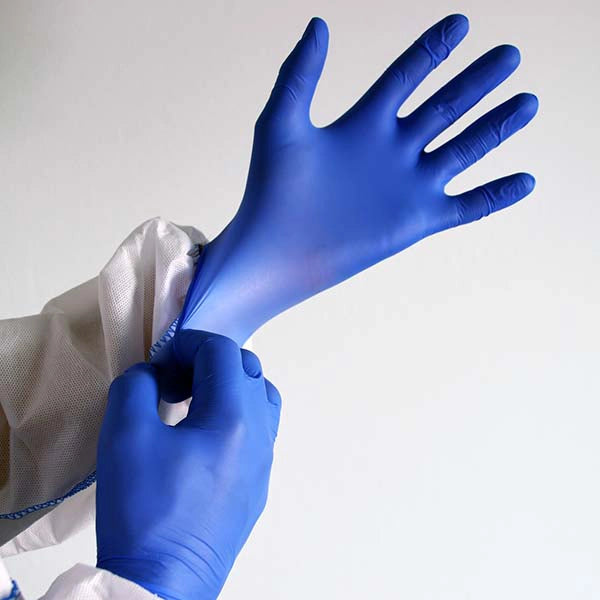Rubber gloves are used by people for a variety of reasons. While most would associate rubber gloves with tasks involving oil and grease, they can also be found in hospitals, factories, laboratories, and other places where occupational safety and protection is a priority.
In medical applications, a rubber glove is one of the most commonly used gloves. They are available in different shapes, sizes, and thicknesses and manufactured from varying materials. These gloves are made from latex extracted from rubber tree. However in recent years, synthetic latex gloves have become more popular. It is a material that has almost replaced the traditional cotton and rubber gloves in all surgeries and other medical procedures where additional levels of protection are needed.
Rubber Gloves Materials
As the name implies, there gloves are typically made of natural or synthetic latex, used as protective clothing to help prevent the wearer from coming into contact with various substances. The term ‘rubber’ refers to a durable, waterproof, elastic material made from tree sap or synthetic latex. Rubber gloves can be either unsupported (a glove made entirely of rubber) or supported (a glove made with a rubber coating over a textile glove).
However, there are many types of disposable gloves available to the public. The primary materials used for rubber gloves are latex, nitrile, and vinyl. Each type of gloves has its own unique qualities.
In this article, we'll explore the differences between these three materials.
Latex Disposable Gloves
Natural rubber latex has long been the preferred raw material for the manufacture of gloves. It comes from the sap of rubber trees and is processed with chemicals that give it properties like flexibility and durability.
Because latex is high in water and has little rubber content—about 70% of it is water, protein, sterol glycosides, resins, ash, and sugars—it forms a concentrated and stable compound.
Manufacturers add chemicals to latex, including sulfur, zinc oxide, accelerators, pigments, stabilizers, a de-webbing agent, and antioxidants. These chemicals help rubber to maintain a solid surface while being stretched, which prevents holes from appearing in the material. They also make the rubber more resistant to ultraviolet radiation from the sun.
The latex is left to mature for 24 to 36 hours before it's ready for dipping. And, of course, the latex is usually colored with special dyes before it is hardened.
Latex-dipped products, such as surgical gloves and condoms, are highly effective barriers against microorganisms, including bacteria and viruses; the products are also impermeable to infectious fluids. However, natural rubber latex is a very common allergen. Nitrile and vinyl gloves do not contain the proteins found in natural latex, so those who are allergic to it can wear them with no problems.
Nitrile Disposable Gloves
Nitrile gloves are made from synthetic rubber and can provide an effective barrier against viruses, chemicals and caustic liquids. Unlike latex, they don’t have the potential to trigger allergies.
Nitrile is a synthetic, co-polymer made from butadiene and acrylo-nitrile. The nitrile used in disposable gloves contains more acrylo than butadiene, making it resistant to most petroleum-based oils and hydrocarbon fuels.
Acrylonitrile, a useful synthetic chemical that is made from propylene, is produced in volume through the ammoxidation process. The process is used to make textiles, resins, and plastics. It is done by using propylene as source material and an oxidizing agent such as ammonia. The catalyst can vary the properties of the final product.
Nitrile gloves were originally more expensive than latex because of an extra step in the manufacturing process. However, technological advancements have led to cost-effective practices that are now used in nitrile glove manufacturing.
Vinyl Disposable Gloves
A vinyl glove is made of polyvinyl chloride (PVC) a petroleum-based film that is the same material as PVC pipes. Vinyl gloves are created from PVC (polyvinyl chloride), monomer units that bond together to form a polymer – a substance made up of many identical molecules.
To make the synthetic material, chemists bond PVC molecules using polymerization and then add another chemical called a plasticizer which make the material flexible for a disposable glove.
Since vinyl gloves are made of cheap material, they are cost-effective. Vinyl disposable gloves are easy to manufacture and are inexpensive. A pair of vinyl gloves makes a good choice for industries where low cost is more important than durability.
When it comes to quality, vinyl gloves are less durable than a latex or nitrile disposable glove, and don't offer as much protection against chemicals or biohazards. When you stretch vinyl gloves, the molecules separate and the protective barrier is broken down. Vinyl gloves are commonly used in low-risk environments, as they are inexpensive and offer minimal protection.
Final Thoughts
Rubber gloves have become one of the most important safety equipment used in a variety of industries. Therefore, it is important to know how they are made, what they are made of, and how that affects their final composition. With this knowledge in mind, you will be more knowledgeable when choosing gloves for your personal or professional application.
Aside from the material, gloves also come in different grades and thicknesses. Depending on the use, it's usually a good idea to opt for extra thick and non-sterile gloves as these will provide an additional level of protection against any skin reactions. It is also important that you use a glove manufactured by a reliable brand and certified to be free from harmful substances.




